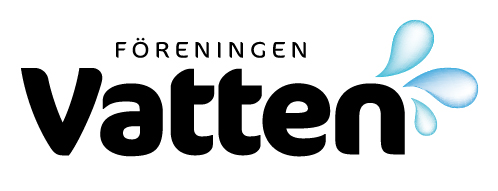VATTENSPECIALISTENS ROLL FÖR EN HÅLLBAR UTVECKLING / The water specialist’s role for a sustainable development
Water problems are becoming more and more complex to solve in a sustainable manner. The reason for this is a rather radical change of focus from engineering solutions to a more interdisciplinary hydro-ecological and socioeconomic perspective during the latest decades. At the same time many occurring water problems are changing character from the local to […]
MEASURING OCCURRENCE OF ALGAE WITH DELAYED FLUORESCENCE EXCITATION SPECTROSCOPY / Mätning av algförekomst med fördröjd fluorescensexcitationsspektroskopi
Increased nutrient load often causes algal blooms. An algal bloom lowers the water quality which is a problem in many fresh water catchments. Today, we have too little information about how the nutrient supply influences the algal composition. With a new method (still under development), called ”delayed fluorescence (DF) excitation spectroscopy”, the goal is to […]
PRODUKTIV RENING MED MIKROALGER I KALLT KLIMAT / Productive treatment of wastewater with microalgae in cold climate
This article reports the work done in the doctoral project ”Productive treatment of wastewater in cold climate with microalgae”, and concludes that microalgae may improve wastewater treatment in ponds in cold climate, from a treatment perspective as well as a sustainability perspective. Part of this work has previous been published in the licentiate thesis 2002: […]
AVRINNING FRÅN GRÖNA TAK / Runoff from green roofs
The runoff from an extensive green roof in Malmö was measured over more than a year. The roof, which is 4 m long sloping 2.5 %, is covered by 3-4 cm soil substrate with sedum vegetation. About 10 mm rain is required to generate runoff. The monthly and annual water balance of a green roof […]
UTILIZATION AND TREATMENT OF SECONDARY WASTEWATER EFFLUENT IN SHORT-ROTATION ENERGY FORESTRY – A PILOT STUDY
Municipal secondary wastewater effluent was applied to plots, 900 m2 each, on a middle-class farming land planted with willows (primarily clones from Salix viminalis} according to the short-rotation energy forestry (SREF) concept in Sweden. Wastewater was applied at rates of 2, 4, 6, 8, 10 and 12 mm/d, respectively, throughout the growth period (May-October) during […]
PUBLIC WATER UTILITIES AND PRIVATISATION IN SWEDEN / VA-service och privatisering i Sverige
Public water and sanitation service (the VA service) have since the end of the 19th century been managed by municipalities in Sweden. However, as a part of the influence from the globalisation discussion this model has been challenged in recent years. For instance, in 2000 the German-based Eon company bought the assets of the Norrköping […]
EFFECT OF BACKWASHING ON THE FUNCTIONING OF LIMESTONE FILTRATION; RESULTS OF A PILOT TEST
Acidity and excess amount of iron and manganese are the most common problems in Finnish groundwater demanding water treatment measures. Also, groundwater in Finland is usually soft. Biological methods, such as a combination of dry filtration and slow filtration, are commonly used. This method removes iron and manganese from water and increases the pH-level somewhat, […]
CONSTRUCTED FILTERS FOR METAL REDUCTION IN STORM WATER / Konstruerade filter för reduktion av metaller i dagvatten
Increased demand for storm water treatment has created development in filtration technologies for storm water. Manufacturers are using different filtration facilities and different filter materials. Therefore there is a need – from manufacturers, universities and government organisations – to put together current knowledge and to clarify important aspects concerning constructed filter systems. The first part […]
SYNPUNKTER PÅ MIKROORGANISMER SOM INDIKATORER I VATTENFÖRSÖRJNINGEN / Comments regarding microorganisms as indicators in water supply
The concept of coliforms as faecal pollution indicator organisms have been used to evaluate the water quality and the efficiency of the water treatment for about 100 years with varying degrees of success. Water borne diseases are caused by wider sorts of micro-organisms. The importance of the viruses and protozoa are increasing. These micro-organisms have […]
REVIDERAT KONTROLLPROGRAM FÖR DAGVATTEN VID MALMÖ-STURUPS FLYGPLATS / Revised monitoring programme for storm water quality at the Malmö-Sturup airport
A monitoring program for stormwater quality from the Malmö-Sturup airport was ratified by the regional authority in 1989. The dominating source of water pollution from the airport is the chemicals monopropy-lenglycol, urea and potassium acetate, used during winter season for deicing of the aircraft’s and runways. The monitoring programme included 5 sampling stations with monthly […]
